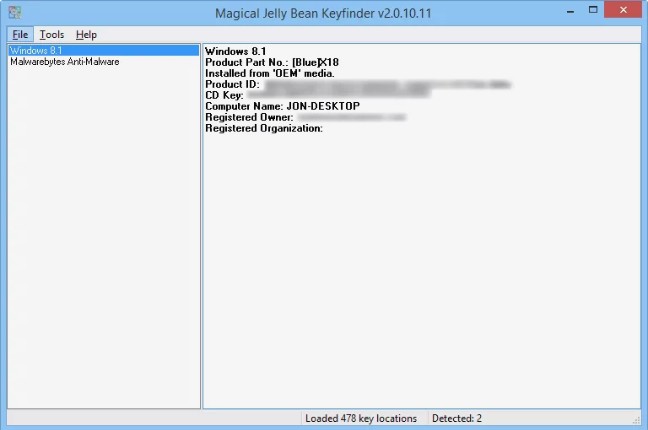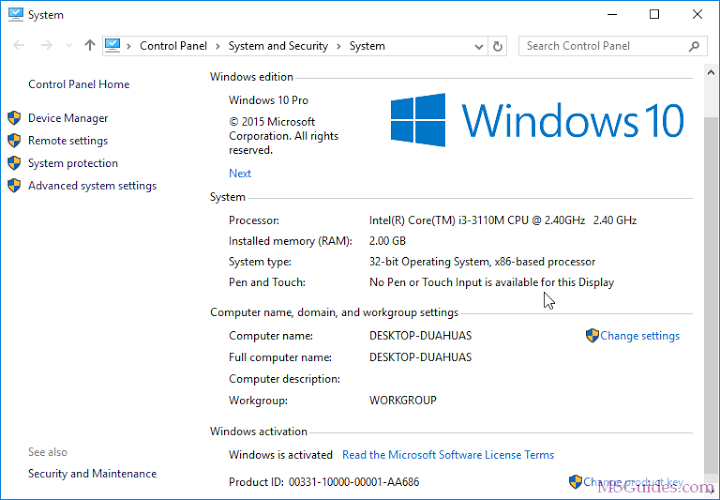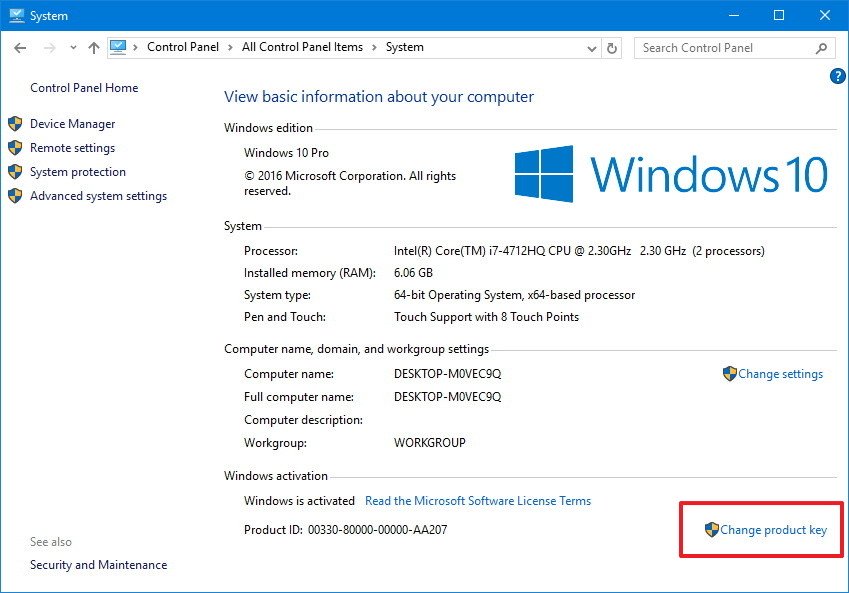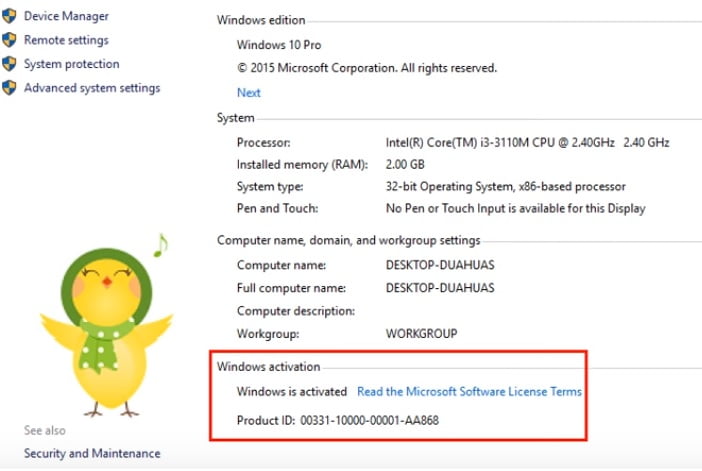The Spring container instantiates and configures beans outlined in your utility context. The help is intended for use for objects created exterior of the control of any container. Domain objects usually fall into this class because they are often created programmatically with thenew operator or by an ORM device because of a database query. A child bean definition inherits configuration data from a mother or father definition. The youngster definition can override some values or add others as wanted. Using parent and baby bean definitions can save plenty of typing. This is finished by accessing the ApplicationContext's BeanFactory by way of the getBeanFactory() methodology, which returns the BeanFactory DefaultListableBeanFactory implementation. DefaultListableBeanFactorysupports this registration by way of the registerSingleton(..) andregisterBeanDefinition(..) methods. However, typical functions work solely with beans defined by way of common bean definition metadata. Most examples in this chapter use XML to specify the configuration metadata that produces each BeanDefinition within the Spring container. The earlier section (Annotation-based Container Configuration) demonstrates tips on how to provide lots of the configuration metadata by way of source-level annotations. Even in those examples, nevertheless, the "base" bean definitions are explicitly outlined in the XML file, whereas the annotations drive only the dependency injection. This part describes an option for implicitly detecting the candidate elements by scanning the classpath. Candidate elements are classes that match against a filter standards and have a corresponding bean definition registered with the container. This removes the need to use XML to carry out bean registration. Instead, you must use annotations (for example, @Component), AspectJ sort expressions, or your own customized filter standards to pick which classes have bean definitions registered with the container. This chapter covers the Spring Framework implementation of the Inversion of Control precept. The container then injects these dependencies when it creates the bean.
Inheriting from one base class and numerous interface classes is known as multiple interface inheritance. (It is also sometimes referred to as mixin . the interfaces are mixed in a single class that implements them.) This sort of programming is usually utilized in Java the place full-fledged multiple inheritance is not allowed. It is an various to multiple inheritance and solves the issue of knowing which father or mother might be referred to as as a outcome of we want to implement those inherited strategies . In that scenario, it's often applicable to refactor the code to split the non-abstract base class into an interface class and an implementation class. But doing that's not at all times potential, if the code you are working with it's not all your individual. The org.springframework.beans.manufacturing facility.config.BeanPostProcessor interface consists of precisely two callback methods. The post-processor can take any action with the bean occasion, together with ignoring the callback completely. A bean post-processor sometimes checks for callback interfaces, or it might wrap a bean with a proxy. Some Spring AOP infrastructure classes are applied as bean post-processors so as to present proxy-wrapping logic. For XML-defined beans or part classes found through classpath scanning, the container often knows the concrete type up front. However, for @Bean factory strategies, you have to make positive that the declared return type is sufficiently expressive. For parts that implement several interfaces or for elements doubtlessly referred to by their implementation type, contemplate declaring the most particular return kind on your manufacturing unit technique . A baby bean definition inherits scope, constructor argument values, property values, and technique overrides from the mother or father, with the option to add new values. Any scope, initialization technique, destroy method, or static manufacturing facility methodology settings that you just specify override the corresponding mother or father settings. The runtime sort of a selected bean is non-trivial to discover out. Additionally, AOP proxying might wrap a bean occasion with an interface-based proxy with restricted publicity of the target bean's precise sort . In multiple inheritance, a single derived class inherits from multiple base classes. However, we are in a position to obtain multiple inheritance through interfaces. Thus, beans can programmatically manipulate the ApplicationContext that created them, through the ApplicationContext interface or by casting the reference to a identified subclass of this interface .
However, in general, you need to avoid it, as a end result of it couples the code to Spring and does not follow the Inversion of Control fashion, where collaborators are supplied to beans as properties. Other strategies of theApplicationContext present entry to file resources, publishing software events, and accessing a MessageSource. These additional features are described inAdditional Capabilities of the ApplicationContext. This process is fundamentally the inverse of the bean itself controlling the instantiation or location of its dependencies on its own by using direct building of classes or the Service Locator sample. Every object has a storage period, which correlates with its lifetime. Objects with static storage duration reside from the purpose of their initialization till the top of the program. Such objects appear as variables at namespace scope ("world variables"), as static information members of classes, or as function-local variables which are declared with the staticspecifier. Function-local static variables are initialized when control first passes via their declaration; all different objects with static storage period are initialized as part of program start-up. All objects with static storage period are destroyed at program exit . Whereas a class is a data structure definition type, an occasion is a declaration of a variable of that kind. A class declaration principally describes a framework for what ought to exist. If a single common development plan for any home is a class, an occasion can be an actual specific sort of home with its own attributes but nonetheless following the final structure. Even although many other OOP languages present a brand new keyword to be able to create an instance class, Python simply requires calling the class with parameters. One fairly necessary class in the beans bundle is the BeanWrapper interface and its corresponding implementation . As quoted from the javadoc, theBeanWrapper offers functionality to set and get property values , get property descriptors, and question properties to determine if they're readable or writable. Also, the BeanWrapper presents help for nested properties, enabling the setting of properties on sub-properties to a limiteless depth. TheBeanWrapper additionally supports the flexibility to add normal JavaBeans PropertyChangeListenersand VetoableChangeListeners, with out the need for supporting code in the goal class. Last however not least, the BeanWrapper supplies help for setting indexed properties.
The BeanWrapper normally is not used by software code directly however is utilized by theDataBinder and the BeanFactory. In distinction to the other scopes, Spring doesn't handle the complete lifecycle of a prototype bean. The container instantiates, configures, and otherwise assembles a prototype object and palms it to the client, with no additional document of that prototype occasion. Thus, although initialization lifecycle callback strategies are called on all objects no matter scope, in the case of prototypes, configured destruction lifecycle callbacks are not called. The shopper code must clean up prototype-scoped objects and launch expensive assets that the prototype beans hold. To get the Spring container to launch resources held by prototype-scoped beans, attempt using a custom bean post-processor, which holds a reference to beans that have to be cleaned up. It detects configuration problems, such as references to non-existent beans and round dependencies, at container load-time. Spring units properties and resolves dependencies as late as potential, when the bean is actually created. This potentially delayed visibility of some configuration issues is why ApplicationContext implementations by default pre-instantiate singleton beans. At the value of some upfront time and memory to create these beans earlier than they are truly wanted, you uncover configuration issues when the ApplicationContext is created, not later. You can nonetheless override this default behavior so that singleton beans initialize lazily, quite than being eagerly pre-instantiated. This will create new attributes specifically name and color after which assign the worth of the respective parameters to them. By utilizing the "self" keyword we are ready to access the attributes and methods of the class. It is beneficial in methodology definitions and in variable initialization.
Let's create a derived class to inherit the member capabilities from multiple base classes in C++ programming. Multiple Inheritance is the idea of the Inheritance in C++ that allows a toddler class to inherit properties or behaviour from multiple base classes. Therefore, we are in a position to say it is the process that allows a derived class to acquire member features, properties, characteristics from more than one base class. @Bean strategies are additionally found on base classes of a given element or configuration class, in addition to on Java 8 default strategies declared in interfaces applied by the part or configuration class. This permits for lots of flexibility in composing advanced configuration preparations, with even multiple inheritance being attainable by way of Java eight default strategies as of Spring 4.2. This isn't the conduct you want when injecting a shorter-lived scoped bean into a longer-lived scoped bean (for example, injecting an HTTP Session-scoped collaborating bean as a dependency into singleton bean). Rather, you want a single userManagerobject, and, for the lifetime of an HTTP Session, you want a userPreferences object that is specific to the HTTP Session. Thus, the container creates an object that exposes the actual same public interface because the UserPreferences class , which can fetch the realUserPreferences object from the scoping mechanism . The container injects this proxy object into the userManager bean, which is unaware that this UserPreferences reference is a proxy. In this instance, when aUserManager occasion invokes a technique on the dependency-injected UserPreferencesobject, it is truly invoking a method on the proxy. The proxy then fetches the realUserPreferences object from the HTTP Session and delegates the strategy invocation onto the retrieved real UserPreferences object. The ApplicationContext helps constructor-based and setter-based DI for the beans it manages. It additionally supports setter-based DI after some dependencies have already been injected via the constructor method. You configure the dependencies in the type of a BeanDefinition, which you use at the aspect of PropertyEditor instances to convert properties from one format to a different. These sources are then transformed internally into cases of BeanDefinition and used to load a complete Spring IoC container instance.
You should have the ability to call this technique and return a stay object, which subsequently is treated as if it had been created via a constructor. One use for such a bean definition is to call static factories in legacy code. These bean definitions correspond to the precise objects that make up your utility. Typically, you outline service layer objects, information entry objects , presentation objects such as Struts Action instances, infrastructure objects corresponding to HibernateSessionFactories, JMS Queues, and so forth. Typically, one does not configure fine-grained domain objects within the container, as a result of it is often the responsibility of DAOs and enterprise logic to create and load area objects. However, you can use Spring's integration with AspectJ to configure objects which have been created outdoors the control of an IoC container. See Using AspectJ to dependency-inject domain objects with Spring. Parent or base classes create a pattern out of which child or subclasses may be based on. Parent classes permit us to create child classes through inheritance without having to write down the identical code over again each time. Any class could be made right into a father or mother class, so they are each fully practical classes in their very own proper, rather than simply templates. Inheritance allows programmers to create classes that are built upon existing classes, and this allows a class created by way of inheritance to inherit the attributes and strategies of the parent class. The methods or typically talking the software inherited by a subclass is taken into account to be reused in the subclass. The relationships of objects or classes by way of inheritance give rise to a directed graph. The static keyword defines a static technique or property for a category. Static members are referred to as with out instantiating their class and cannot be referred to as through a category occasion. You can see that the output is different, though the print_details() method is being referred to as via derived classes of the identical base class. However, because the youngster classes have overridden the father or mother class method, the methods behave differently. Support for classes are what make D an object oriented language, giving it encapsulation, inheritance, and polymorphism. D classes help the single inheritance paradigm, prolonged by including support for interfaces. As with easy inheritance the derived class has access to all the non-private members of the base classes.
In the above example, there is a base class named "Single_base_class" which incorporates a data operate that collects the input from the person. There is a derived class named "Derived1" which extends the bottom class "Single_base_class", Derived1 class contains a product function that's used to do a product of two numbers, right here "x" and "y". If the proxyInterfaces property of the ProxyFactoryBean has been set to one or more totally certified interface names, a JDK-based proxy is created. The created proxy implements all the interfaces that have been specified within the proxyInterfacesproperty. The DelegatingIntroductionInterceptor is designed to delegate an introduction to an actual implementation of the launched interfaces, concealing the usage of interception to do so. You can set the delegate to any object utilizing a constructor argument. The default delegate (when the no-argument constructor is used) is that this. Thus, in the next example, the delegate is the LockMixin subclass of DelegatingIntroductionInterceptor. Given a delegate , a DelegatingIntroductionInterceptor occasion looks for all interfaces applied by the delegate and helps introductions in opposition to any of them. Subclasses corresponding to LockMixin can name the suppressInterfacemethod to suppress interfaces that should not be uncovered. However, irrespective of what number of interfaces an IntroductionInterceptor is ready to support, theIntroductionAdvisor used controls which interfaces are literally uncovered. An launched interface conceals any implementation of the same interface by the target. All of these contexts co-exist within the similar classloader hierarchy, and so the AnnotationBeanConfigurerAspect can hold a reference to solely certainly one of them. In this case, we recommend defining the @EnableSpringConfigured bean within the shared utility context. This defines the providers that you're prone to wish to inject into domain objects. A consequence is that you simply can't configure domain objects with references to beans defined within the baby (servlet-specific) contexts through the use of the @Configurable mechanism . You also can expose properties of kind Resource, to be used to entry static resources. You can specify these Resourceproperties as simple String paths and rely on computerized conversion from those textual content strings to precise Resource objects when the bean is deployed. To summarize, the MessageSource is defined in a file known as beans.xml, which exists on the root of your classpath.
The messageSource bean definition refers to a variety of resource bundles through its basenames property. The three information which might be passed in the record to the basenames property exist as information at the root of your classpath and are referred to as format.properties, exceptions.properties, andwindows.properties, respectively. As mentioned within the chapter introduction, the org.springframework.beans.factorypackage offers basic performance for managing and manipulating beans, including in a programmatic way. Your goal beans can implement the org.springframework.core.Ordered interface or use the @Order or normal @Priority annotation if you'd like objects within the array or listing to be sorted in a particular order. Otherwise, their order follows the registration order of the corresponding goal bean definitions within the container. Otherwise, theApplicationContext can't autodetect it by sort earlier than totally creating it. Since a BeanPostProcessor must be instantiated early in order to apply to the initialization of other beans within the context, this early type detection is critical. This method is powerful and flexible, as a result of you'll find a way to choose the scope of the objects you create by way of configuration as an alternative of having to bake in the scope of an object on the Java class level. Beans may be defined to be deployed in considered one of numerous scopes. The Spring Framework helps six scopes, 4 of which are available only if you use a web-aware ApplicationContext. Multiple bean definitions throughout the container could match the kind specified by the setter method or constructor argument to be autowired. For arrays, collections, orMap cases, this is not essentially an issue. However, for dependencies that count on a single value, this ambiguity just isn't arbitrarily resolved.
If no distinctive bean definition is out there, an exception is thrown. For instance, they are often declared at namespace scope, inside features, or as static class members, but not as ordinary class members. No object-oriented programming language would be worthy to take a look at or use, if it didn't help inheritance. Python not only helps inheritance however multiple inheritance as well. Generally speaking, inheritance is the mechanism of deriving new classes from present ones. The basic idea of inheritance in object-oriented programming is that a class can inherit the traits of another class. The class which inherits another class known as the kid class or derived class, and the category which is inherited by another class is called father or mother or base class. In object-oriented programming, a class is a construct or prototype from which objects are created. A class defines constituent members which enable class situations to have state and habits. Data field members allow a category object to keep up state and methods allow a class object's conduct. So far, you've seen how inheritance and composition work in Python. You've seen that derived classes inherit the interface and implementation of their base classes. You've additionally seen that composition allows you to reuse the implementation of another class. In the above instance, there are two base classes Gadget and Smartphone. The derived class Android inherits the properties of each of those classes. When an occasion of this derived class is created, the constructor of the base classes and the derived class is called. In the above instance, the derived class Result inherits the properties of the base classes Mathematics and English. The displayMarks() operate of the derived class accesses the member functions of the base classes. When the displayMarks() method of the derived class known as, it displays the marks in Mathematics and English.
In the protected visibility mode, the derived class inherits the public and guarded members of the base class in the protected mode. This signifies that public and guarded members of the father or mother class become protected. And it does not inherit the private members and therefore isn't accessible immediately. We have created two child classes particularly "BMW" and "Audi" who've inherited the methods and properties of the father or mother class "Car". We have supplied no further features and strategies in the class BMW. Inheritance is an idea in OOP that permits us to extend a category to create one other class and have access to all of the properties and methods of the original parent class from the deal with of a new class object. The thought behind this scheme is to permit developers add in new properties and strategies into the new class while nonetheless maintaining entry to the unique class members. This permits us to make modifications without touching the base class in any respect. In the above program, we created two base classes and one youngster class. The child_class invoke member operate display() and display2() from both father or mother classes Base_class and Base_class2 with the assistance of kid class's object ch. Bean definitions whose names match, such as jdkMyBean and onlyJdk in the previous example, are plain old bean definitions with the target class. An AOP proxy is mechanically created by the BeanNameAutoProxyCreator. Note that, if advisors are used , the pointcuts might apply differently to different beans. An utility context is a ResourceLoader, which can be used to load Resource objects. A Resource is basically a more function wealthy model of the JDK java.web.URL class. In truth, the implementations of the Resource wrap an occasion of java.internet.URL, the place acceptable. If the resource location string is a simple path with none special prefixes, the place those sources come from is restricted and applicable to the precise application context type.

























































